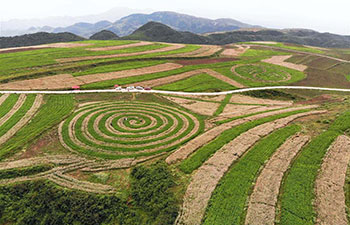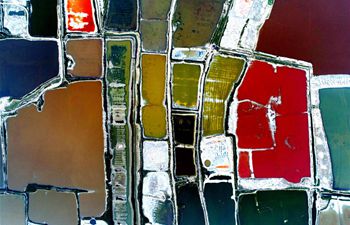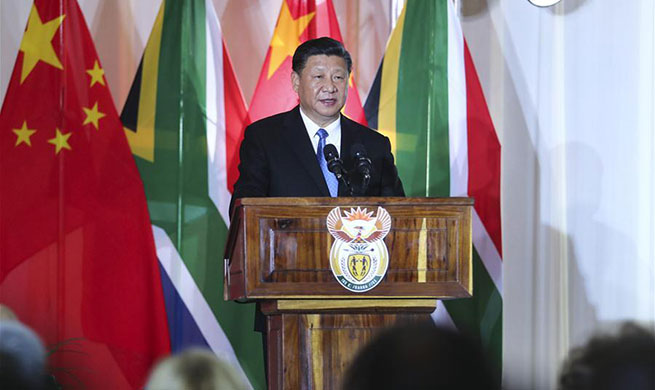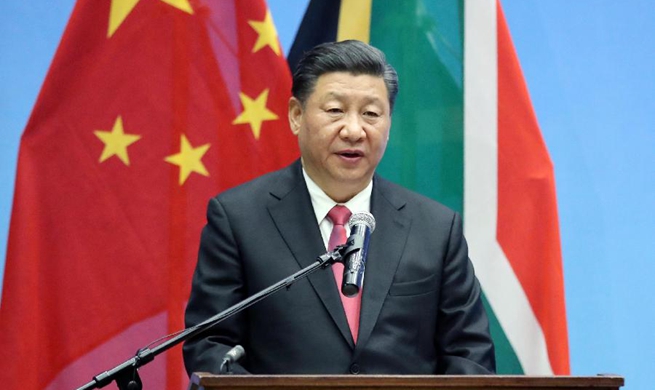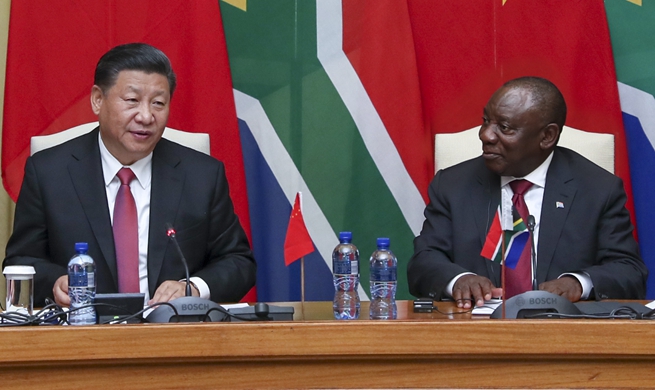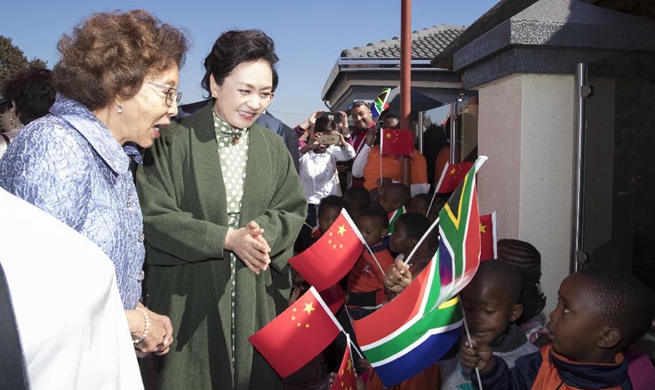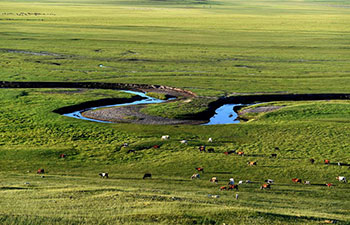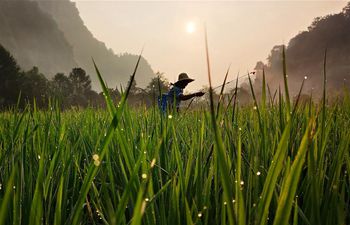NAIROBI, July 25 (Xinhua) -- Joseph Musonye rotates a drum mixer with vigor until beads of sweat form on his forehead.
He wipes them with his handkerchief and then dips his hand inside the equipment, scoops the content and checks it.
Not satisfied, he continues to rotate the mixer another 10 minutes, before he removes the content and puts in a gunny bag.
Musonye, a fish farmer in Ruai on the outskirts of Nairobi, is making feeds using such ingredients as fishmeal, maize germ, cottonseed cake, and wheat bran.
He now makes feeds himself to cut production costs, as are many other farmers keeping poultry, dairy cows, fish and pigs, the majority of whom after attending feed formulation classes.
"This has helped me cut costs by 20 percent," Musonye said.
He bought the drum mixer for an equivalent of 200 U.S. dollars.
Feeds usually account for up to 40 percent of the production costs in livestock keeping, and the farmers can cut that to 25 percent by making their own feeds.
"It costs 25 dollars for a 50kg bag of fish feeds. For my 1,000 fish, I need at least a bag and a half a week or less. This is very expensive if I buy commercially formulated feeds," Musonye said.
He now buys feeds ingredients in kilos, with a 2kg tin of fishmeal going for 1.3 dollars and the rest of the ingredients at between 0.20 dollars and 0.40 dollars.
Samuel Mutinda, a chicken farmer in Kitengela, south of Nairobi, also makes feeds by himeself.
"Making feeds for my chickens enables me not only to save costs but I am also assured of quality," he said.
Mutinda noted that he chose the path after realizing low-quality commercial feeds were affecting his birds' egg production.
"I tested the feeds and realized they were low in crude protein content," he said.
Mutinda spent 100 dollars on feed formulation classes offered by a veterinarian.
"I think it was the best thing I have ever done for my business," said Mutinda, who now knows the science behind feed formulation. "If I was not formulating my feeds, I would have closed shop."
Simon Ndirangu, a veterinarian who offers feed formulation lessons to farmers, says demand for the classes has doubled as people take to poultry, dairy and fish farming.
"I conduct classes of at most 15 people twice a month. I charge 70 dollars and it entails both theory and practical lessons," he said.
Poultry farmers lead in the uptake of the lessons, followed by fish and dairy.
"Many pig farmers don't come for the lessons because they keep the animals on contract with the buyer dictating most activities," he said.


